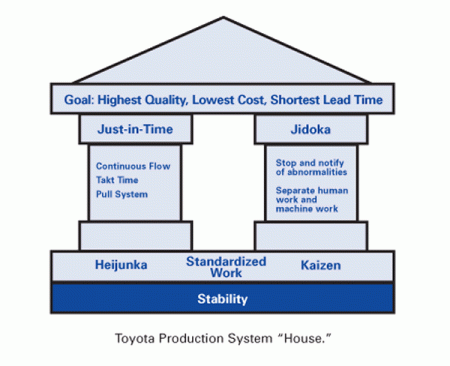You’ve probably heard the term ‘business innovation’ being hailed as a practice to drive business success and to sustain growth during turbulent times – but what does it actually mean?
In this blog we’ll endeavor to cut through the noise and give you a full overview of how organizations innovate, why they choose to adopt the practice, and what they achieve out of it. We’ll also dive into how innovation helps drive business success and longevity.
What Exactly is Business Innovation?
The Cambridge Academic Content Dictionary defines innovation as ‘a new idea or method, or the use of new ideas and methods’. Fundamentally, this is what innovation in business is – the use of ideas to create something new, whether this be a new product, process, service, or anything else. However, what’s important to consider is how businesses go about finding new ideas and methods. This requires establishing processes and procedures that allow you to manage the discovery, development, and implementation of ideas, resulting in a repeatable, scalable, and sustainable way of innovating.
Why do Businesses Choose to Innovate?
Organizations choose to adopt the process of innovation for a myriad of reasons; to tackle existing challenges by ideating for solutions, to generate new revenue streams, to improve existing products or services, and so on.
Here a few benefits that organizations are most likely to achieve from innovation:
Competitive Edge
There are many examples of new businesses taking over the market and killing their competitors, but perhaps one of the most well-known is Blockbuster vs. Netflix. “In 2000, Netflix approached Blockbuster with an offer to sell their company to Blockbuster for US$50 million. Blockbuster, was not interested in the offer because it thought was a “very small niche business” and it was losing money at the time.”
Of course Blockbuster’s reluctance to move to a digital model was Netflix’s gain, in 2020 the streaming giant achieved a total net income of $2.76 billion.
Growth and Revenue
According to a report by Accenture titled ‘Governing Innovation: The Recipe for Portfolio Growth’,
that surveyed 1,090 executives across 11 industries, “companies that govern innovation extensively over time expect stronger revenue growth”.
Accenture identified 12 key rituals that companies can practice to effectively govern innovation, which include; ‘putting innovation at the centre of corporate strategy’, ‘everyone generates ideas, and ‘actively build a culture of innovation’. Applying these rituals “delivered 2x revenue growth compared to those following a haphazard approach”.
Organizations that develop strategies to innovate put themselves in a far greater position to generate revenue growth than those that don’t.
Accenture reveals the recipe behind portfolio growth with their 12 key rituals to governing innovation.
Employee Engagement
The benefits of employee engagement are no secret, especially to organizations who want to drive business success and longevity.
According to CultureAmp research, ‘Nearly 8 out of 10 of highly engaged employees regard their companies as having a culture that nurtures innovation’. Including innovative processes within business strategy will positively impact employee engagement rate, resulting in a more productive workforce that will drive further success for an organization.
What are the Various Approaches to Innovation in Business?
I briefly touched upon the processes and procedures that organizations implement to find new ideas and innovate, but now I’ll dive further into these, and share the various approaches to innovation that businesses can implement.
1. Gathering Employee Ideas
In business innovation an organization’s employees are truly their biggest asset. Employees have the knowledge, experience, and skill set to keep the engine of a business running day in and day out – so tapping into this with an employee innovation program can open a realm of possibilities.
An employee innovation program is simply a process that empowers each employee to share their ideas. Businesses such as Amazon, Intel, and Philip Morris International each have programs in place to digitally gather, develop, and implement employee ideas. This type of program also allows for organizations to open up specific challenges to their workforce; for example Amazon opened up their challenge of ‘finding a new type of customer loyalty program that would radically change the retail industry. Employees at Amazon, regardless of their role or title were encouraged to submit their ideas in a digital employee-suggestion box. ’The result? Amazon Prime.

The Amazon Prime scheme has since resulted in 200 million members across the globe and in 2016 a revenue of $6.4billion – all from one employee idea.
By providing a way for employees to share their ideas through a streamlined process whereby the ideas are appropriately collaborated on and evaluated, the wealth of possibilities available to an organization substantially increases.
2. Continuous Improvement
Continuous improvement is a method of innovation that McKinsey describes as ‘an ongoing effort to improve all elements of an organization—processes, tools, products, services, etc. Sometimes those improvements are big, often they are small. But what’s most important is they’re frequent.’
When organizations choose to utilize continuous improvement, also known as incremental innovation, they make continuous changes to existing products, processes, and services to streamline and enhance them. This results in vast cost savings, enhanced productivity, stronger products and services, and is likely to better position a company for large scale innovation in future.
Toyota have been said to adopt continuous improvement practices, creating the ‘Toyota Production System’ in pursuit of ‘efficient methods’. The TPS system is founded on two primary concepts:
1) Jidoka, which means to stop the line whenever a problem occurs to immediately address this issue so that no bad products are produced
2) Just-in-time, which means that each unit of production is made only when the downstream customer or process signals demand for a new unit.
This graphic from The Lean Enterprise Institute illustrates Toyota’s use of the continuous improvement method to improve existing processes efficiently.
3. Open Innovation
Open innovation includes much of the same processes as an employee innovation program, but ideas are instead gathered from external sources such as customers, partners, or external experts. Gathering knowledge and ideas from these resources allows a business to tap into otherwise unheard voices and opinions. We all like to think we know what the customer wants, but when giving them the opportunity to share their ideas there can be no doubt. Not only does this form of innovation directly improve customer experience by helping deliver upon customer’s ever-evolving needs, it again provides a constant flow of ideas to a business to assess and implement, driving business longevity.
A great example of open innovation comes from NASA who used the concept to create a mathematical algorithm that determines the correct amount of medical kits for future space missions. NASA collaborated with TopCoder and opened the challenge to its 220,000 developers. The campaign resulted in 2,833 idea submissions which produced numerous enhanced solutions that NASA adapted for use.
4. Scouting
Scouting is a strategic form of innovation that involves searching for existing technologies and services to partner with or buy out. If organizations don’t have the resources or time to develop new products, innovation scouting gives businesses the opportunity to stay abreast of market changes. Sagacious Research regard scouting as ‘observing changes in the current setup, assessing the potential of various new ideas…It helps them to find opportunities for new partnerships, acquisitions, licensing, and co-development initiatives.’
When businesses ensure that they are aware of any existing gaps in their existing setup, this in turn creates opportunity for organizations to act on it. Speaking to Harvard Business Review, ‘Senior Vice President of Global R&D at Kellogg, Nigel Hughes, explains that marketers often create “opportunity briefs” for scouts who work in the R&D organization. “Our marketing colleagues… say to us, ‘Look, if you could solve this problem, we think we can turn this into a big commercial opportunity,’” says Hughes.’
Once a gap has been identified and a technology/service has been scouted to fill it, not only can businesses provide a better and more appealing customer experience, but they are creating a process that sustains competitive edge, ultimately driving business success.
Businesses should always be on the look out and scout for new trends and technology.
How can Businesses Implement Innovation?
Now that you are aware of some of the approaches businesses can take to innovate, we’ll now discuss how they can be implemented within an organization.
As we move further into the digital realm whereby digital transformation is becoming more and more important (especially in today’s increasingly remote world), digital tools are the most efficient and successful way of implementing innovation.
Here at Qmarkets we have a created a full suite of digital tools that allow organizations to implement a full range of innovation processes, from an employee innovation program through to Scouting.
Head to our product page to find out more about our full suite of innovation solutions.
Innovation in Business
Now that you have been given an overview of what innovation in business is, I hope that you come to understand that business innovation is simply a collection of processes that an organization can deploy to launch, sustain, and generate new ideas and methods that result in new products, services, process improvements, and more.
In today’s disruptive world, innovation is required more than ever to continuously grow and adapt to ever changing demands, as well as to ensure customer satisfaction. Innovation puts businesses in the best position possible to see out disruption, beat competition, and build business longevity.
If you want to find out more about innovation in business, why not subscribe to our newsletter and receive innovation news straight to your inbox, or if you want to hear more about us here at Qmarkets, contact us today for a chat!



